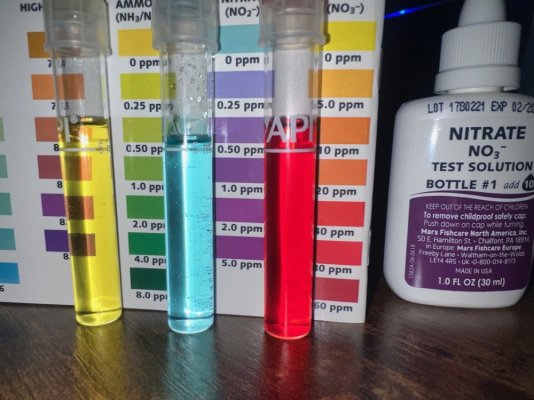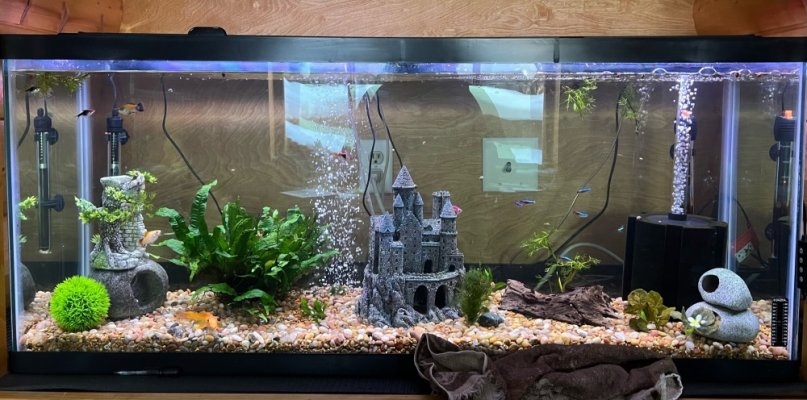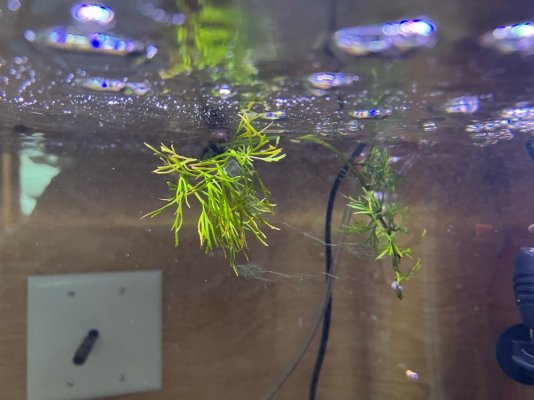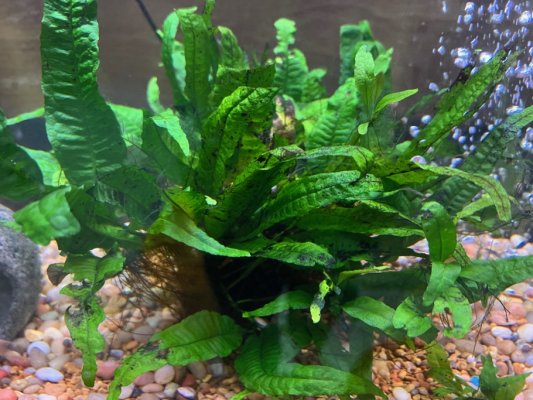Schwendy22
Aquarium Advice Newbie
- Joined
- Nov 12, 2022
- Messages
- 4
Hello all - I'm new to the advice forums and hope someone can give me some things to consider when dealing with high nitrate levels. Here are the details on my setup: I have a 55 gal tank with one 5" golden algae eater, two plattys, one glo tetra, 6 cardinal tetras, 3 rasboras, one danio, and three salt & pepper corys. I run a sponge filter (6" diameter) and have an additional air stone. My light is an LED Hygger I got off of Amazon. I was running it on the 24 hour mode until I had an explosion of green hair algae, at which time I reduced the light to 6 hours a day. I added water sprite in April, and a java fern (a large one) in August.
The water sprite I originally had floating and it seemed to be doing quite well until about a month ago. I tried planting it in my rock substrate but the roots completely melted. The java fern has been struggling since I got it. Since I use RO water, so I starting to dose Seachem Equilibrium when I do water changes (added per dosing instructions to new water only) and started using Easy Green fertilizer from Aquarium Co-Op. I also use Seachem Prime (also dosed and added to new water only). I've gotten the hair algae more under control since lowering the amount of light, but it's still showing up on my plants. The java fern doesn't seem to be responding to the increase in minerals/fertilizer. My water sprite is completely melting and dying.
Also, my nitrates are consistently high - like 80ppm. I do weekly water changes but those dang nitrates are still too high. I thought plants were supposed to help with this but maybe I just chose the wrong plants.
Overall my fish seem ok, but I did lose one platy two weeks ago. Banging my head trying to figure out what to do... Will fertilizers and/or Equilibrium raise nitrate levels? I really want to have live plants, but can't figure out what I'm doing wrong.
Pics added for reference.
The water sprite I originally had floating and it seemed to be doing quite well until about a month ago. I tried planting it in my rock substrate but the roots completely melted. The java fern has been struggling since I got it. Since I use RO water, so I starting to dose Seachem Equilibrium when I do water changes (added per dosing instructions to new water only) and started using Easy Green fertilizer from Aquarium Co-Op. I also use Seachem Prime (also dosed and added to new water only). I've gotten the hair algae more under control since lowering the amount of light, but it's still showing up on my plants. The java fern doesn't seem to be responding to the increase in minerals/fertilizer. My water sprite is completely melting and dying.
Also, my nitrates are consistently high - like 80ppm. I do weekly water changes but those dang nitrates are still too high. I thought plants were supposed to help with this but maybe I just chose the wrong plants.
Overall my fish seem ok, but I did lose one platy two weeks ago. Banging my head trying to figure out what to do... Will fertilizers and/or Equilibrium raise nitrate levels? I really want to have live plants, but can't figure out what I'm doing wrong.
Pics added for reference.




